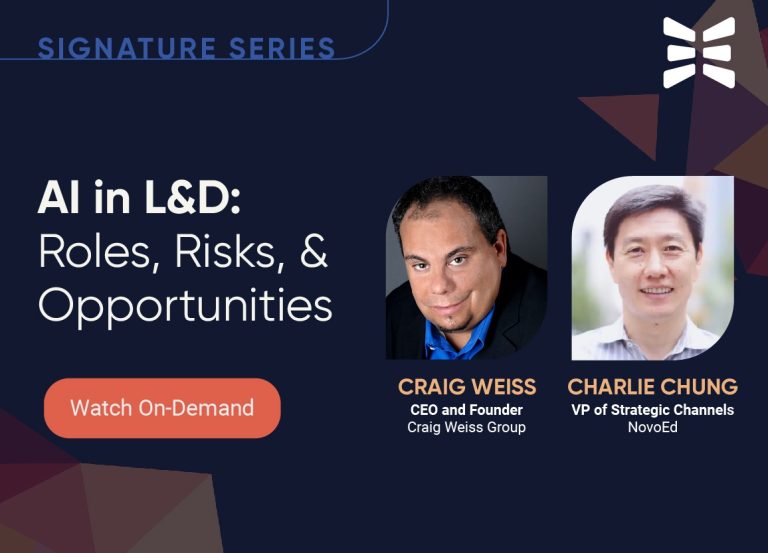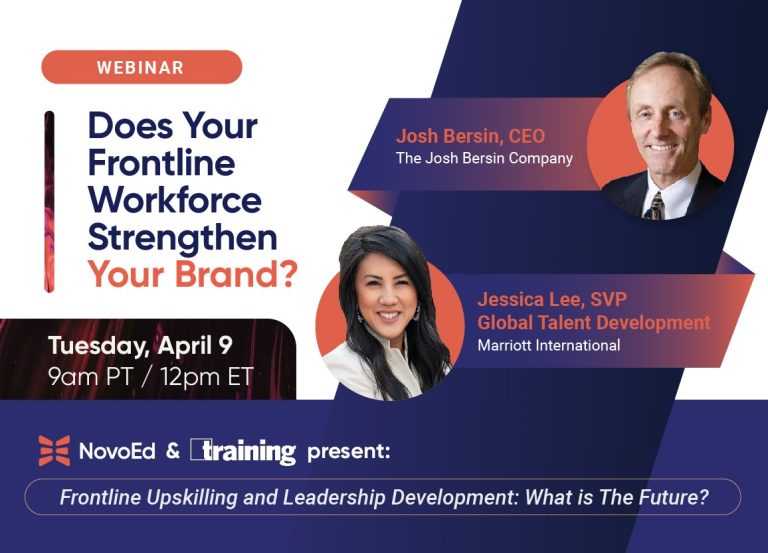Diversity, Equity, and Inclusion Training for Transformational Workplaces
The business results are in, and they’re conclusive: Strategic corporate diversity equity and inclusion (DEI) initiatives are a key driver of innovation and a critical component of a company’s continued success on a global scale. Successful organizations are aware that a wide-ranging set of experiences, perspectives, and backgrounds leads to the development of new ideas that lends a competitive edge in an ever-evolving marketplace.
Where does this boost in performance and productivity stem from? The Center for Talent Innovation found that companies with 2-D diversity — including “inherent” diversity categories of gender, race, and socio-economic background, as well as “acquired” diversity characteristics such as cultural fluency, generational savvy, technological literacy, and military experience — are 75% more likely to see ideas turn into actual measurable results.
Often overlooked, however, is that the benefits of diversity only emerge in inclusive work environments. In an article in the Harvard Business Review, Laura Sherbin and Ripa Rashid write: “In the context of the workplace, diversity equals representation. Without inclusion, however, the crucial connections that attract diverse talent, encourage their participation, foster innovation, and lead to business growth won’t happen.”
Understanding the difference between diversity equity and inclusion in the workplace
“Diversity is being invited to the party. Inclusion is being asked to dance.”
This illustrative quote by Netflix VP of Inclusion Strategy Vernā Myers explains the difference between diversity and inclusion in a compelling way: It takes more than giving people from different backgrounds an opportunity. It requires making sure everyone has equal chances to actively participate.
By definition, diversity encompasses the range of similarities and differences each individual brings to the workplace, including but not limited to national origin, language, race, color, disability, ethnicity, gender, age, religion, sexual orientation, gender identity, socioeconomic status, veteran status, and family structures. Diversity is defined by who we are as individuals. We all bring with us diverse perspectives, work experiences, lifestyles and cultures.
Equity indicates the action of recognizing that each individual comes from different circumstances, and therefore, requires specific resources and opportunities to reach an equal outcome as their peers.
Inclusion refers to a state of being valued, respected, and supported. It’s about focusing on the needs of every individual and ensuring the right conditions are in place for each person to achieve their full potential. Inclusion is the process of creating a workplace that recognizes, appreciates, and effectively utilizes the talents, skills, and perspectives of every employee; uses employee skills to align with and achieve the organization’s mission and goals; connects each employee to the organization; and encourages collaboration, flexibility, and fairness.
The goal for today’s workplaces, therefore, is equitable and inclusive diversity — a company culture that promotes collaboration and alignment amongst a diverse group. Diversity equity and inclusion are interconnected concepts that refer to the variety of unique individuals that make up a group of people and the environment that allows them to work together as equally valued contributors.
How to build a more inclusive workforce
Ample research supports this concept — that diversity equity and inclusion are key to building the most efficient, innovative, and successful teams. One study by Gartner revealed that a highly diverse environment can improve team performance by up to 30%. Diversity equity and inclusion initiatives can also lead to better decision-making and higher profitability. In fact, according to McKinsey & Company, the most diverse companies outperform their less diverse peers by 36% in profitability.
In the fight for global talent, diversity equity and inclusion hiring policies are being designed specifically as recruiting and retention tools, helping to broaden the pool of talent a company can recruit from, while also helping to build an employment brand that is seen as fully inclusive.
Looking forward, companies must also grapple with an aging workforce, a declining pipeline of qualified talent, and the challenges of managing a multigenerational workforce. But as long as organizations keep diversity equity and inclusion efforts at the top of their priority list, it will help insulate them to these challenges and come out ahead of the competition.
Furthering the diversity equity and inclusion conversation will go a long way toward creating a greater sense of belonging among an organization’s employees and can bring substantial benefits to the bottom line. The Harvard Business Review reports that a high sense of belonging can result in a 56% spike in job performance, a 50% reduction in turnover risk, and a 75% reduction in sick days.
How digital training can transform organizational diversity equity and inclusion initiatives
The basic formula for diversity equity and inclusion is rapidly evolving. It is no longer simply a matter of creating a heterogeneous workforce, but using that workforce to create the innovative products, services, and business practices that can set a company apart and give it a competitive advantage in the marketplace. And as companies compete on a global scale, diversity equity and inclusion initiatives frequently have to shift, as different markets and different cultures have varied definitions of what diversity means.
In the past five years, the traditional workplace landscape changed forever. In 2020 alone, companies worldwide spent approximately $7.5 billion on diversity equity and inclusion-related efforts, and that figure has grown every year since, with McKinsey projecting that it will double to $15.4 billion by 2026. Yet at many companies, progress to increase diversity equity and inclusion has been slow or nonexistent.
For DEI goals to succeed, executives and learning and development leaders must be held accountable to them. Yet, most DEI plans don’t offer this level of compliance: a Harvard Business Review article reports that only 28% of companies hold C-suite executives accountable for progress against the diversity equity and inclusion strategy, 23% for pay equity, 12% for gender diversity, and 5% for racial and ethnic diversity. A mere 7% of companies hold execs accountable for gender diversity in promotions, and 5% are accountable for racial and ethnic diversity in promotions.
Measurement, both qualitative and quantitative, of these programs is business-critical, and organizations need both internal and external data to hold leaders and their teams accountable.
A social and collaborative learning platform can engage learners through contextual training that seamlessly uplifts different perspectives that speak to an organization’s specific culture and values, as well as leverages deep usable data. Implementing a digital diversity equity and inclusion training strategy can help ensure buy-in from all levels of an organization and can create an environment where continuous learning is part of the employee experience.
In addition, technology has the potential to be a disruptive force to the structural biases that can hinder true progress in expanding diversity, equity, and inclusion efforts. Digital learning programs can help equip organizations with a common language to begin to address these challenges as the conversation shifts from respect and sensitivity to bold and courageous action in today’s workplaces.
At their most sophisticated, DEI programs are not self-contained but are programmatic, enterprise-oriented, and cross-functional in nature, recognizing the need for diverse, equitable, and inclusive practices in Leadership, Onboarding, Sales, Customer Service, and other areas of a modern enterprise. These programs extend throughout a company’s value chain, beginning with supplier diversity and ending with DEI-oriented CX programs.
How one global corporation is driving diversity equity and inclusion
Embracing diversity as an organizational capability is championed by such global corporate leaders as CEMEX, the Mexico-based construction solutions giant with more than 42,000 employees in more than 50 countries.
At CEMEX, the urgency to develop diversity, equity, and inclusion as an organizational capability emerged in the context of the company’s digital transformation, shifting business environments, and an industry that is consolidating rapidly. As company leadership reflected on how to develop new revenue streams and new evidence of growth, they realized they could not easily identify the skills they needed inside the organization. This inspired the push for diversity as a strategic capability to be developed by the company. As a global enterprise, CEMEX realized just how important it was to add new personalities, alternative thinking, and a better understanding of its global markets. Diversity at CEMEX is now seen as a strategic enabler for the growth of the business.
One of the many challenges in developing diversity as an organizational capability is where to start. Diversity, equity, and inclusion operate on so many dimensions at work, whether thinking about gender, race, age, religion, disability, sexual orientation, education, social background, or so on. The challenges multiply when you add in regional or cultural belief systems. As a company that is committed to a global “One CEMEX” culture, the organization’s challenge was how to instill the values of diversity, equity, and inclusion consistently across its global footprint. Like many complex systematic overhauls, an effective approach is to focus on a small set of urgent, tangible goals. At CEMEX, three strategic priorities were identified for the company’s diversity, equity, and inclusion efforts.
One of the innovations CEMEX has introduced is to incorporate diversity, equity, and inclusion as values that permeate priorities at all levels of the organization. At the highest level, this involves CEO and board updates, compliance with their UN Social Development Goals, and monitoring demographic changes. Diversity, equity, and inclusion is also incorporated into company policies and processes—the company’s official Workplace Diversity & Inclusion policy, but also work-leave programs, harassment policies, and ethics code. In learning and development programs, DEI is incorporated into leadership development and coaching programs. To achieve a global scale, the company leverages learning technology to deliver diversity, equity, and inclusion learning programs quickly and uniformly across all regions.
Policies and statements about diversity and inclusion have little impact unless they spread throughout the organization. As a first step in enacting widespread change, CEMEX has created a digital Unconscious Bias course using the NovoEd platform to scale delivery of the program across their workforce and create a more inclusive company culture.
Learn how to accelerate the impact of your diversity equity and inclusion training at scale. Request a demo today.


